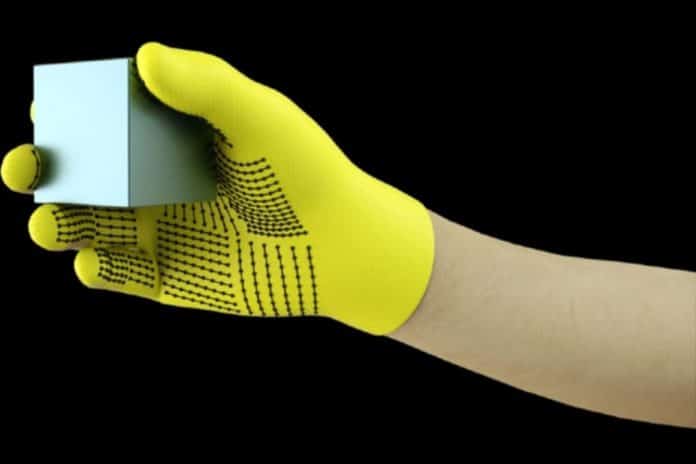Humans have tactile feedback which helps them to identify and handle objects very well. But robots don’t have that rich feedback. Researchers have spent years trying to teach robots how to grip objects having different size and shape without dropping and breaking them.
Now, it seems like they are one step closer to their mission. A team of scientists from MIT has compiled a massive dataset that enables an AI system to recognize objects through touch alone. That information could help robots handle things better and it may also help in designing prosthetics (an artificial device that replaces a missing body part, which may be lost through trauma, disease, or a condition present at birth).
The team has developed a low-cost knitted glove, called “scalable tactile glove” (STAG). It is equipped with about 550 tiny sensors across nearly the entire hand, each sensor is designed to record pressure signals as humans interact with objects in various ways. A neural network processes the signals to learn a dataset of pressure-signal patterns related to specific objects. Then, the system uses that dataset to classify the objects and predict their weights by feel alone, with no visual input needed.
The researcher compiled the dataset by wearing the STAG while handling 26 different objects, including a soda can, scissors, tennis ball, spoon, pen, and a mug. They say the sensor-packed glove was able to predict the objects with up to 76% accuracy. Additionally, it can also predict the correct weights of most objects within about 60 grams.
“We’ve always wanted robots to do what humans can do, like doing the dishes or other chores,” said MIT researcher Subramanian Sundaram. “If you want robots to do these things, they must be able to manipulate objects really well.”
Well, this is not the first glove so far to gather pressure data like this, but most others are very expensive and contain only around 50 sensors which gather less information. Whereas, the STAG is made of commercially available materials, produces very high-resolution data and costs only $10 to produce.
Moreover, this sensor-packed glove is laminated with an electrically conductive polymer that changes resistance to applied pressure. The researchers sewed conductive threads through holes in the conductive polymer film, from fingertips to the base of the palm. The threads overlap in a way that turns them into pressure sensors. When someone wearing the glove feels, lifts hold, and drops an object, the sensors record the pressure at each point.
The research was published in Nature. The team will likely combine the glove with other sensors to give robots an even better sense of what they’re handling.
